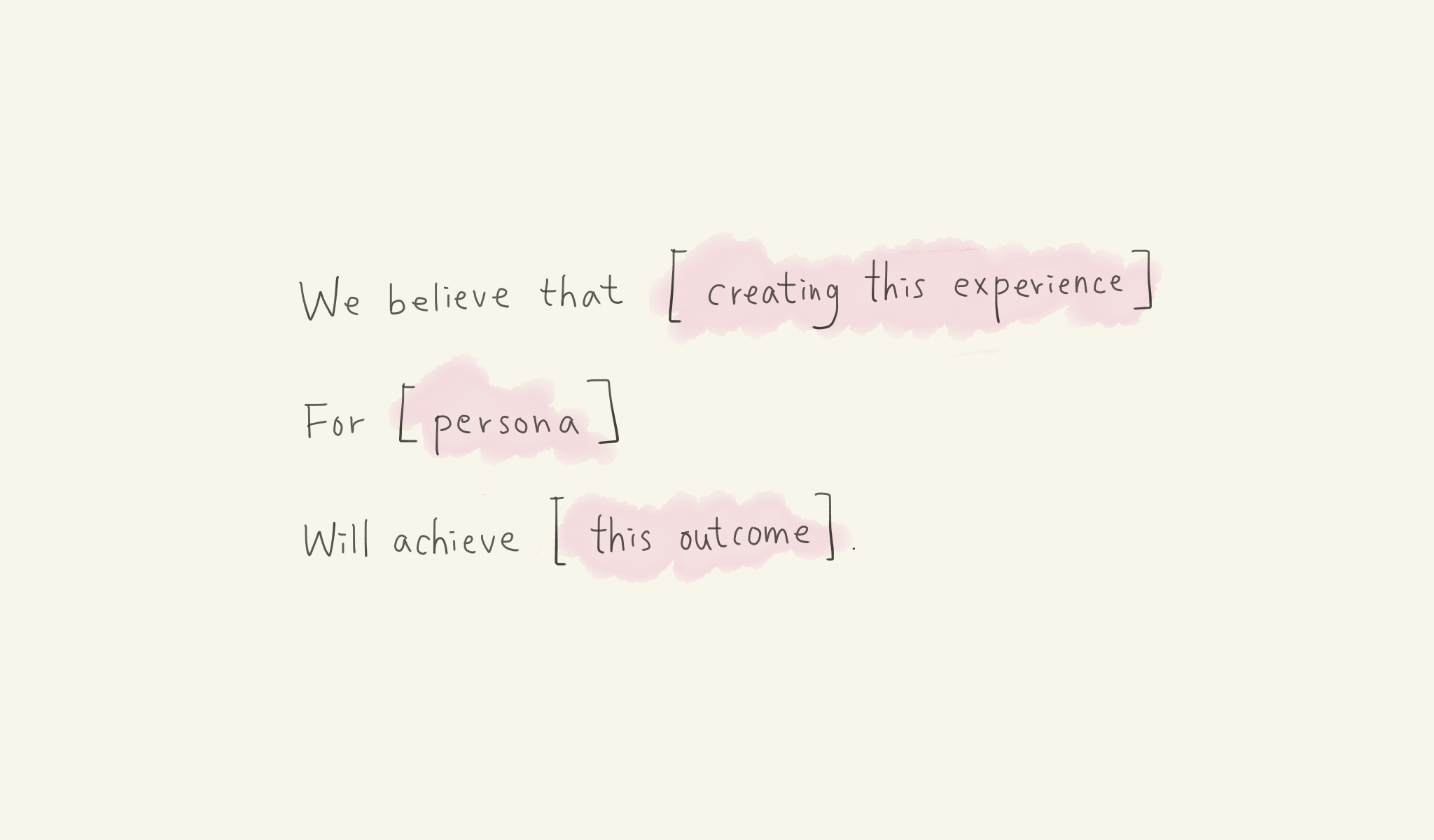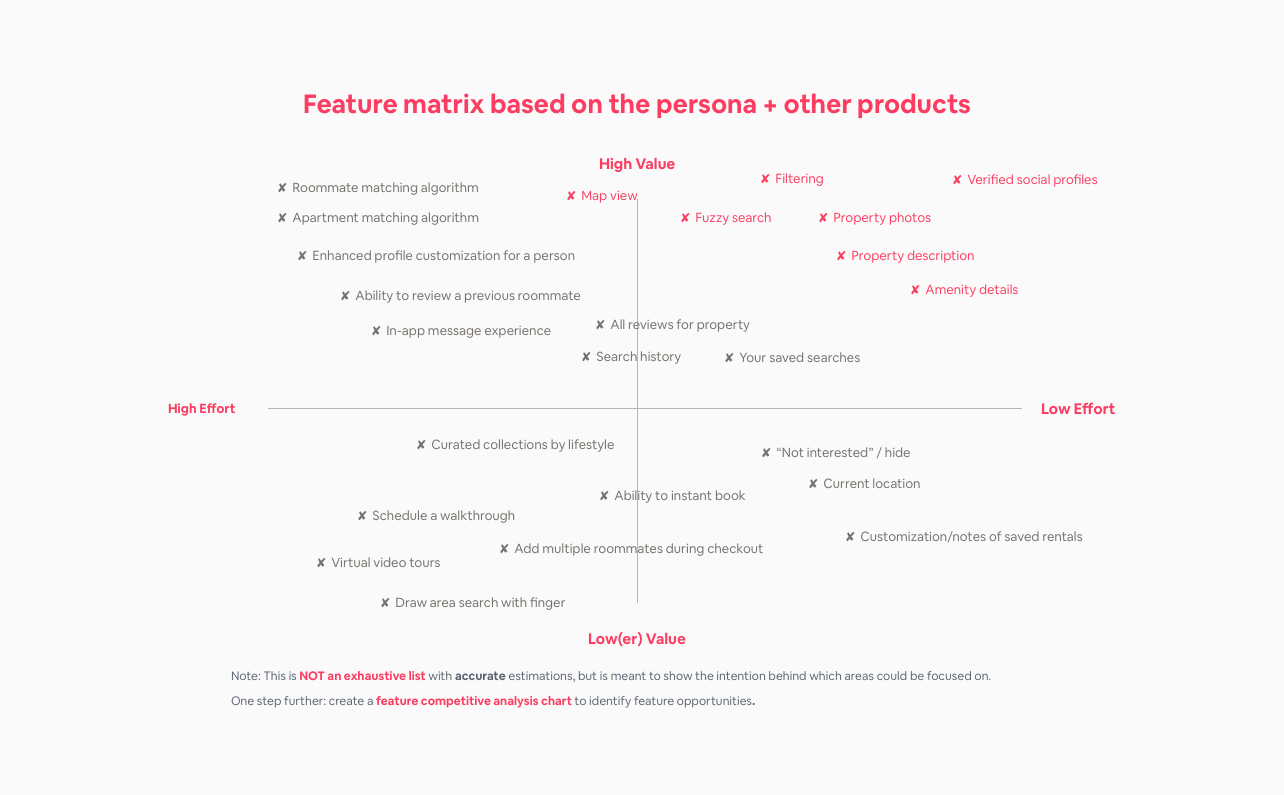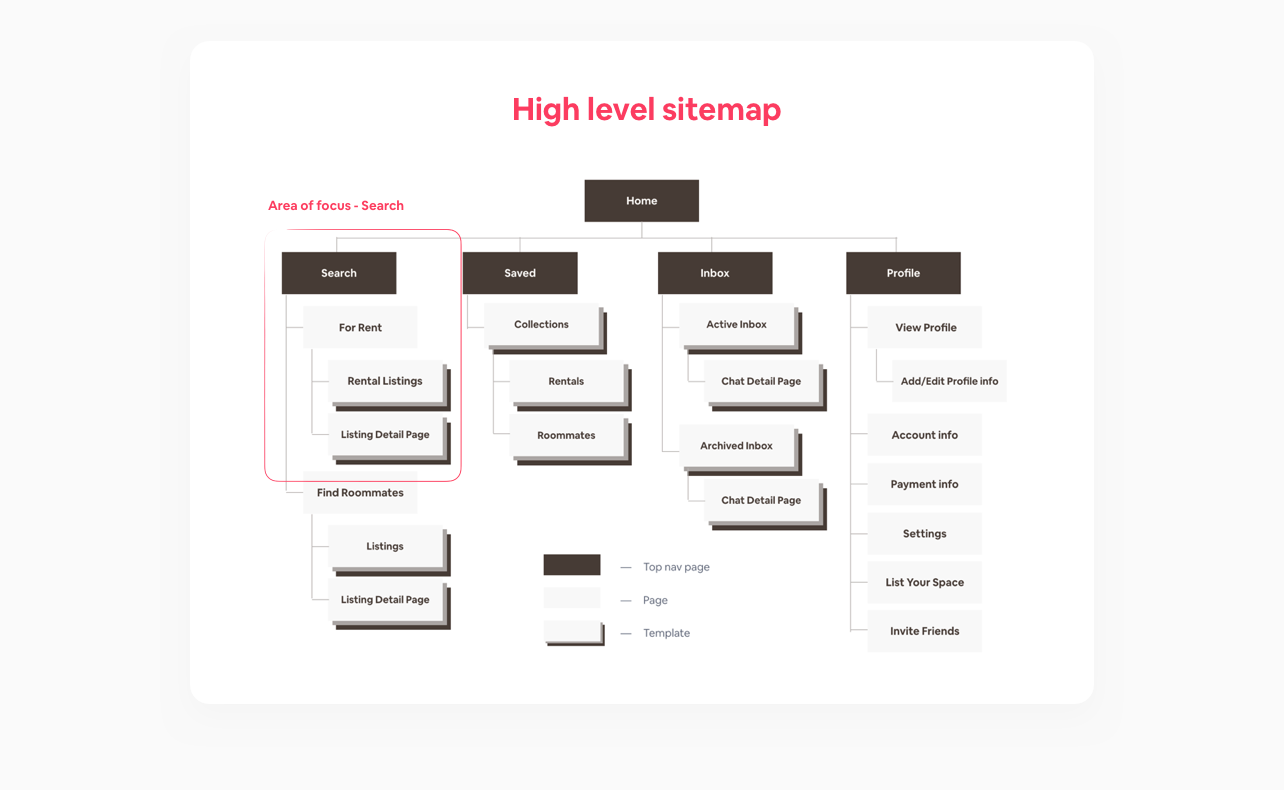Design Exercise
Research, design, and iteration for a 48hr take home design exercise for an LA-based tech company.
Client: Midsize software company
Role: research, UX, UI
Time Limit: 48 hours
Brief: Design a mobile app for Airbnb that leverages the core product for its entry into the apartment & roommate industry.
The Hypothesis: Creating a roommate & apartment matching experience for millennials who are looking to rent with roommates will achieve higher reviews in trustworthiness and satisfaction than solutions available today.
The full prompt:
Design a roommates finding & matching service for Airbnb.
Finding apartments and roommates seems increasingly challenging nowadays. Imagine Airbnb is also entering this renting business. Airbnb has put you in charge of designing a new mobile app. How can we leverage Airbnb’s current experience for travelers and extend it for city dwellers? As for the challenge today, we can narrow the scope to explore (finding & matching) part.
01. Define
I first started by identifying the problem stated in the prompt, which was that “Finding apartments and roommates seems increasingly challenging nowadays.”
Searching for apartments and roommates is consuming.
Finding someone who is trustworthy, a lifestyle match, within the same budget, and then finding an agreeable property to lease is difficult even with popular roommate and apartment methods available today.
Forming the Hypothesis

From Lean UX.
We believe that creating a roommate & apartment matching experience for millennials who are looking to rent with roommates will achieve higher reviews in trustworthiness and satisfaction than solutions available today.
02. Research
In order to form the hypothesis, qualitative and quantitative industry research about Airbnb, renters, and apartments were explored so I could gain insight to who the users are.


Airbnb attracts millennials
Airbnb Citizen reports that growth has been propelled by several factors, including popularity among millennial travelers (defined between 18 and 35 years of age)

Millennial attitudes influence why they rent
Millennials have different attitudes towards debt, mobility, and family formation than Boomer parents.
Because millennials are the most college-educated generation they owe exorbitant student loan debt, resulting in financial hesitation to get married, buy a house, or have children.
Historically, the housing market crash of 2008 has made it more difficult for prospective homebuyers to purchase a house.
Statistics show that buying a home is out of reach for young Americans, and for many renters, living with a roommate is a financial necessity.


Final key insight from the survey:
An assumption that the prompt “design a roommate finding & matching service” makes is that if a renter needed an apartment, the’d start their search by finding a roommate first.
However, after speaking with respondents who were actively looking for an apartment, I learned that their actual behavior was to first look for an apartment, then a roommate.
The results of the survey invalidated the hypothesis because 4/5 rental seekers from the study preferred to first narrow an apartment to their liking, then worry about roommate matching second.
The reframed hypothesis:
We believe that creating an apartment finding experience,
For millennials who are looking to rent with roommates,
Will achieve higher reviews in trustworthiness and satisfaction than solutions available today.
The research informs the persona👇🏻
I created an amalgamate persona based on insights from the research. Although Chelsea is only a fictional representation, her pains, motivations, and basic demographic traits may inform considerations when making design decisions.

Then, I “moodboarded” some comparative screenshots.
Aggregating examples of analogous or direct competitor products me synthesize common information architecture, patterns, and component use cases.
The screenshots informed a quick feature matrix.
The feature matrix visually represents level of effort and impact, which can help clarify the essentials vs. the “nice-to-haves.”
Note: this graphic is intended to articulate rationale for a feature framework; it is not an exhaustive with accurate estimations of level of effort.

Lorem ipsum.
The feature matrix visually represents level of effort and impact, which can help clarify the essentials vs. the “nice-to-haves.”
Note: this graphic is intended to articulate rationale for a feature framework; it is not an exhaustive with accurate estimations of level of effort.
03. Design
I leveraged rental industry research, Airbnb’s existing product, and used the persona to shape the decisions made in the design.

Airbnb’s mission is to allow anyone to belong anywhere.
Before beginning any wireframes, I wanted to allow Airbnb’s core values to guide the “why” of design decisions for the renter/rental solution.



Note: This wireframe exercise is focused only on a first-time user that is starting their search.
Pictured: Draft paper wireframes - 1st (back) and 2nd sketches (front).
Since I needed to understand where this flow fit within the IA, I drafted a sitemap.
The sitemap is based off of Airbnb Core.

I came up with 3 different wireframing explorations, but ended up combining 1 & 3.
The strongest value of wireframe 1 was having a drawer-like popover with the list view in the foreground, and the interactive map in the background. The behavior of the popover drawer to swipe up/down felt natural for a mobile app and work effectively with millennial users.
Wireframe 3’s full-page search modal gave a more intentional filtering experience with full screen real estate. Filter order can be further studied with card sorting, and to take one step further - personalizing filter order per account based on user profile factors (age, location, gender, income).
I began mid-fi wireframes
From the























